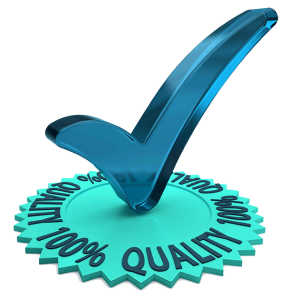
Rare Disease Translations:
Localizing a Highly Complex Field for Understanding Across Languages
While there are many different definitions of what classifies a disease as rare, overall, it is estimated that between 3.5 – 5.9% of the world’s population is affected by a rare disease, making rare disease translations essential to help treat patients across the globe. There are over 6,000 different kinds of rare diseases that have been identified, the majority being from genetic mutations, with the rest from environmental factors that permanently affect a person’s quality of life, either cognitively, physically, or sometimes both. With a lack of research on many different rare diseases, misdiagnosis is common, especially since many symptoms can vary from patient to patient, or patients can be incorrectly diagnosed with another more common disease. Other challenges, such as accessibility of quality health care and medical costs, can also bar patients from receiving the diagnosis and subsequent care needed.
Over the past decade, more time and money has been dedicated around the world to the R&D process to better understand rare diseases and the patients they affect, through regulatory incentives for pharmaceutical companies as well as the establishment of agencies like the International Rare Diseases Research Consortium (IRDiRC) and the U.S. National Institutes of Health (NIH). With this new interest, comes new challenges as well, however. Given the small number of patients afflicted with the disease, and the difference in symptoms for many diagnosed with the same disease, it can be difficult to prove the efficacy and safety of the treatment. Additionally, the logistics in reaching patients all over the world that have the disease, especially when misdiagnosis is so common, presents another, equally challenging task.
As our world becomes increasingly more global, accurate translation of the medical documentation, including EHRs, patient informed consent forms, and eCTD/CTD is critical for not only advancing research around the world, but also for helping reach patients of diverse backgrounds afflicted with these diseases. With this translation, the possibility of greater global understanding of the rare diseases is possible and can help inspire future research of drug development or health care innovation. That is why here at CSOFT Health Sciences, a leading provider of medical communication solutions, we are available 24 hours a day, 365 days of the year, to ensure our clients and those they serve are receiving the highest-quality translation with a quick turnaround time, all for the best ROI. From rare disease studies to treatment with patients, CSOFT’s translation and interpreting support in 250+ languages allow healthcare and research organizations, practices, and government representatives deliver rare disease solutions across the world.
Translations for Rare Disease Clinical Trials
Accurate translation for clinical trials is critical in not only ensuring the drug therapy or medical device product’s success globally, but also in reaching patients of diverse backgrounds, including those afflicted with a rare disease. The importance of high-quality translation, that is both time efficient and cost effective, is critical in facilitating patients receiving a life-saving drug therapy or helping them achieve a higher-quality of life.
CSOFT provides the highest-quality translation for medical documentation throughout the R&D process. With our extensive network of subject matter experts, and over 10,000 in-country native linguists, we understand the importance of timely, accurate translations in the life sciences.
Learn more about our clinical trial translations.

Regulatory Expertise
To effectively globalize research for rare diseases, in-depth knowledge and understanding of local regulatory laws is crucial in the success of the medical device or treatment to market. As markets and the regulatory bodies that oversee them are constantly evolving, staying up to date in adapting submission documents is important in saving time and money for life science companies in rare disease research. CSOFT provides customized regulatory consulting services for life science companies looking to expand their services or product’s reach with the NMPA, FDA, and EMA.
Learn more about our regulatory consulting services.


End-to-End Translation Coverage for a Full Range of Therapeutic Areas
As well as immunology translations, CSOFT’s medical translation and localization coverage expands across a full range of clients, therapeutic areas, and treatment settings. Whether you are a hospital seeking medical communication support in related areas such as rare diseases translation, cardiology translations, men’s health translations, or women’s health translations, or a research organization recruiting patients for clinical trials, CSOFT’s end-to-end localization support covers an extensive range of conditions and therapies across disciplines.
Learn more about our comprehensive coverage for therapeutic areas.
Quality Assurance
CSOFT Health Sciences has developed a process for quality assurance to ensure that every medical translation project meets quality standards in a cost-effective and timely manner. We are certified in ISO 17100:2015, ISO 9001:2015, and ISO 13485:2016 to ensure our customized solutions meet global regulatory requirements. Our subject matter expert linguists have at least seven years of experience and work with in-country reviewers and project style guides to meet industry standards. CSOFT offers an online translation management ecosystem for one central location to leverage real-time translation memory and terminology management through our innovative cloud-based technology. Every step of the way, CSOFT has you covered.
Learn more about our quality assurance process.
Data Security
With over 20 years of experience in medical translation, CSOFT Health Sciences understands the importance of data security to our clients, and we take nothing for granted when confidentiality is a concern. Our well-documented and fully traceable information data security policies, checklists, and quality records leverage the best practices of ISO 27001. They are designed to protect everything from source data to translations. From our 24/7/365 data monitoring and advanced encryption to our access control measures, you can be sure that your project data is safe from start to finish.
Learn more about how CSOFT prioritizes data security.

